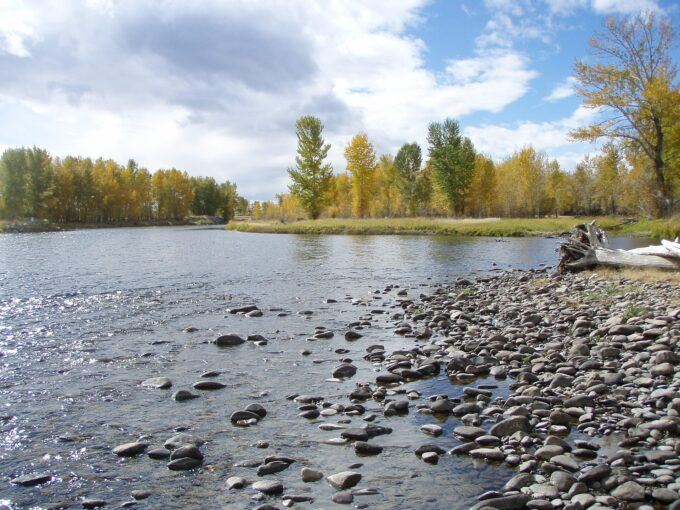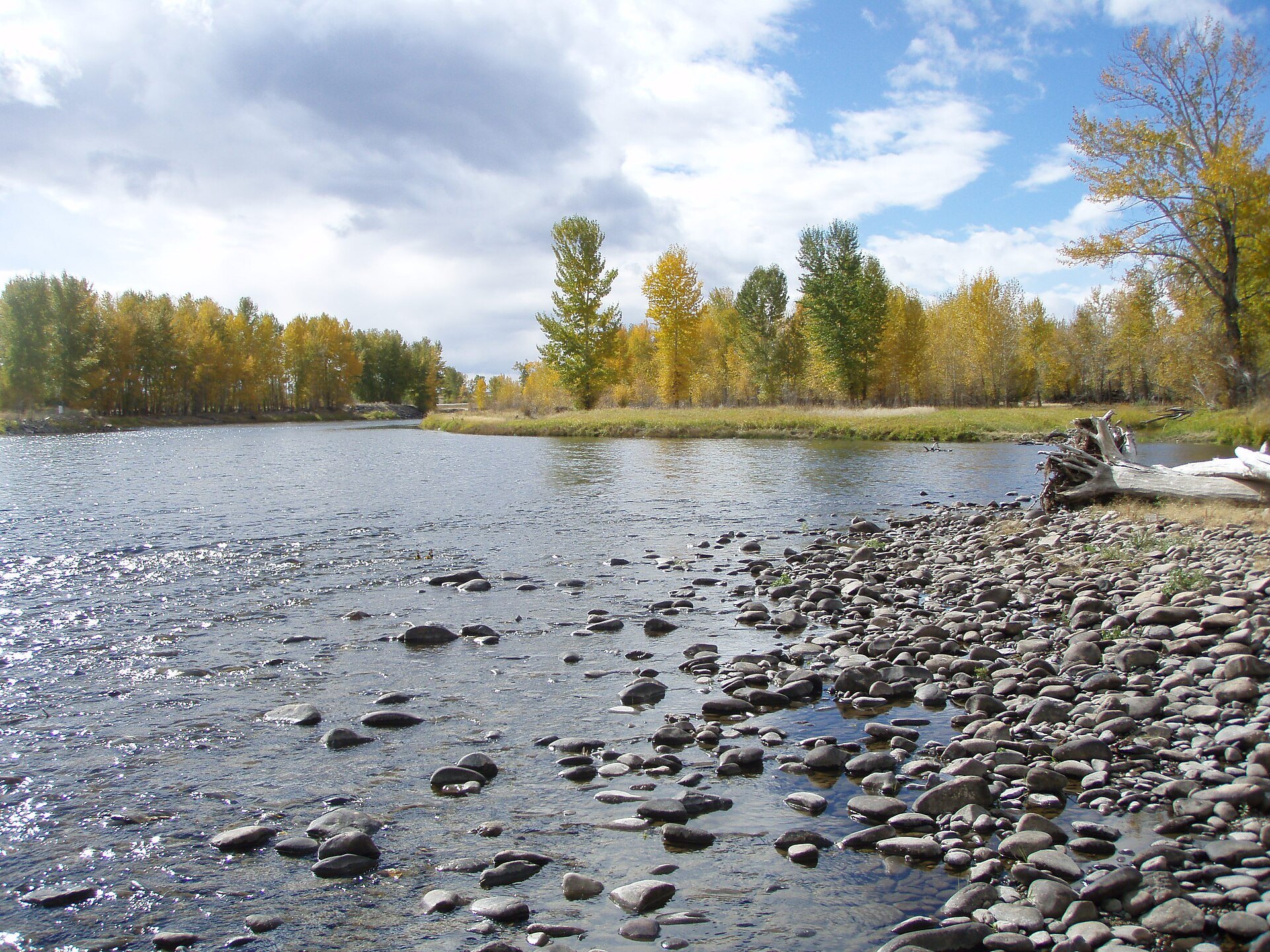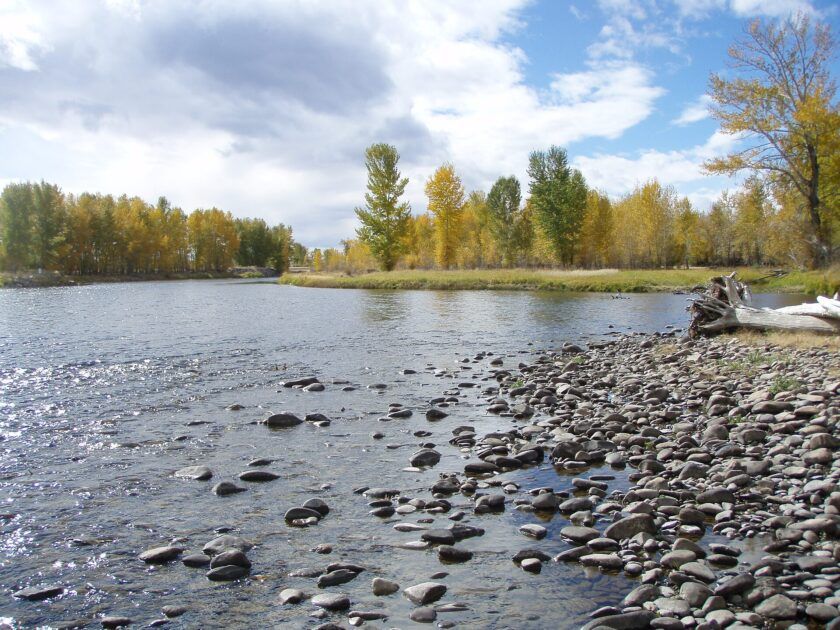


































































Photograph Source: Mike Cline – Public Domain
The incident was first reported by Craig Jones of Great Divide Outfitters, who was on the 3.8 mile stretch between the Jerry Creek and Greenwood Bottoms fishing access sites. As reported by the Montana Standard’s Duncan Adams, Jones put it bluntly: “I came in the day after they’d electrofished and there were dead fish everywhere. It’s just a bummer. It’s just one blow after another (for the river).”
Indeed, the picture Jones posted online shows a very large adult brown trout, half a dozen rainbow trout and a whitefish, just a small part of the more than 70 dead fish they were able to net. Jones added that some dead fish were too small to net and count and eagles were busy retrieving carcasses, meaning there were far more than they counted.
As someone who makes their living on the river, Jones said it made no sense to electrofish after a fish-stressing summer beset by low flows and warm temperatures, adding: “I don’t know how many beatings the fish can take.”
The Big Hole is easily one of the most distressed “blue ribbon” trout streams in Montana. It’s been chronically dewatered by over-appropriated irrigation withdrawals for decades. Combine that with the declining precipitation and increasing temperatures of climate change from human-caused atmospheric pollution, and the river’s low flows and high water temperature woes were magnified to such an extent that the river was partially or fully closed to fishing for much of the summer.
When questioned about electroshocking the already severely stressed fish, the agency responded: “We added an abbreviated fall sampling effort during the MSU studies to provide an opportunity to recapture tagged fish before fall spawning and winter, which compartmentalizes the year in a way that will allow us to better characterize when mortality is occurring.”
They certainly were able to “characterize when mortality is occurring” — although the agency claimed “we didn’t see any immediate mortality during this fish sampling effort, clearly there was some impact.”
Indeed, for the Big Hole’s trout, it’s just another in a long line of “impacts” from gathering “data” for the MSU study. As noted in its 2024 report, the Big Hole fish were already electroshocked, captured, “tranquilized with clove oil,” and had “internal and external passive integrated transponder (PIT) tag(s)” stuck in them — all of which required significant handling of the fish, which has been shown to have negative effects, including mortality. Incredibly, the agency “conducted a recapture run about one week after the initial tagging event.”
At what point do we draw the line on death of fish and game by data gathering for state agencies, organizations, and/or universities? Anglers and organizations had already complained about the agency re-opening fishing in violation of the Big Hole Watershed Committee’s drought plan when the flows were below 25%. Despite public outcry, the already stressed fish were then electroshocked handled, counted, measured, weighed and tagged once again…from which many did not survive.
They can beat around the bush and kill fish through “data gathering” but the Big Hole’s primary problem is insufficient instream flows for the fish to survive and reproduce. That “critical data” is easily gathered by looking at the river’s stream gauges — and then doing something about it.
The post Death by Data for Big Hole Trout appeared first on CounterPunch.org.
This post was originally published on CounterPunch.org.